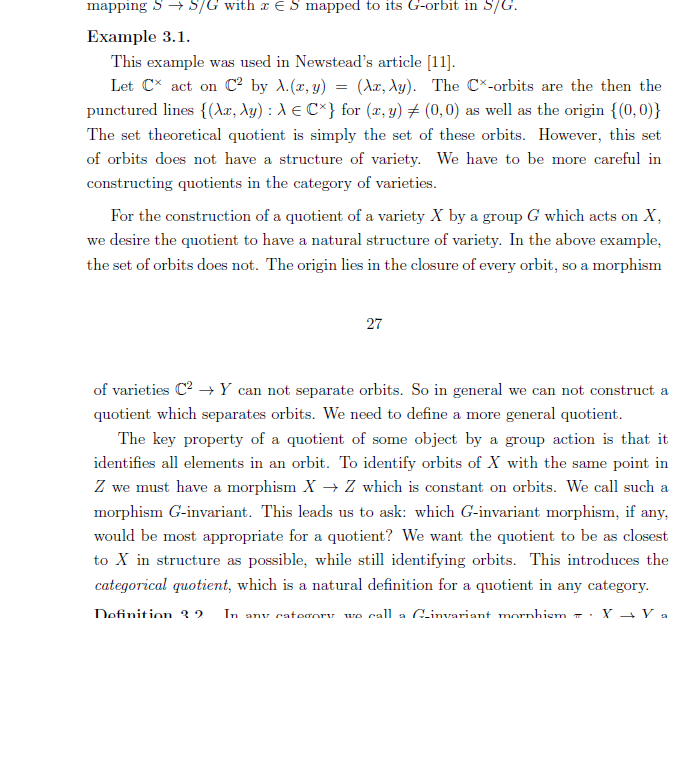Let $X$ be a variety with a $G$-action by an algebraic group.
My question refers to a motivating example from:
https://web.maths.unsw.edu.au/~danielch/thesis/mbrassil.pdf
Here is the relevant excerpt:
Here the author discusses an example of $X/G$ in order to explain that it is necessary to form $X/G$ as categorical quotient and not the topological one.
We consider this motivating example introduced at page 27:
Take $X:= \mathbb{C}^2$ with action by $G:=\mathbb{C}^\times$ via multiplication $\lambda \cdot (x,y) \mapsto (\lambda x, \lambda y)$.
Obviously the "naive" topological quotient consists set theoretically of the lines $\{(\lambda x, \lambda y) \vert \lambda \in \mathbb{C}^x \}$ and the origin $\{(0,0)\}$.
Topologically the origin lies in the closure of every line.
So the QUESTION is why does this argument already imply that $Y:=X/G$ cannot have the structure of a variety? I don't understand the argument given by the author.
If we denote by $p:\mathbb{C}^2 \to Y$ the canonical projection map and by (continuity?) this map can't separate orbits, why does this already imply that $Y$ doesn't have structure of a variety as stated in the excerpt?
Especially which role does the fact that we can't separate the lines from the origin play (in a purely topological way)? Does it cause an obstruction to form a variety structure on $X/G$?
Remark: I know that there are different ways to deduce that if we define $X/G$ purely topologically then it cannot have a structure of a variety. The most common argument is to introduce the invariant ring $R^G$ and to calculate it explicitly. It seems to me that the given argument is a bit too "elementary" in the sense that the author doesn't explicitly work in this example with the concept of the invariant ring $R^G$.

